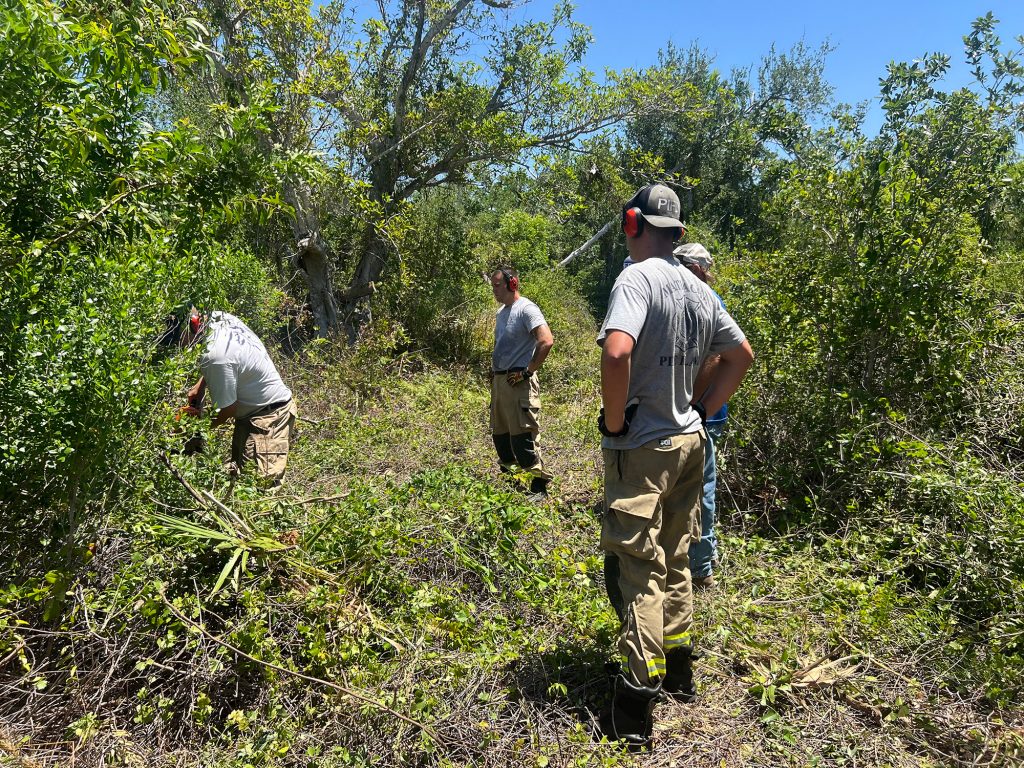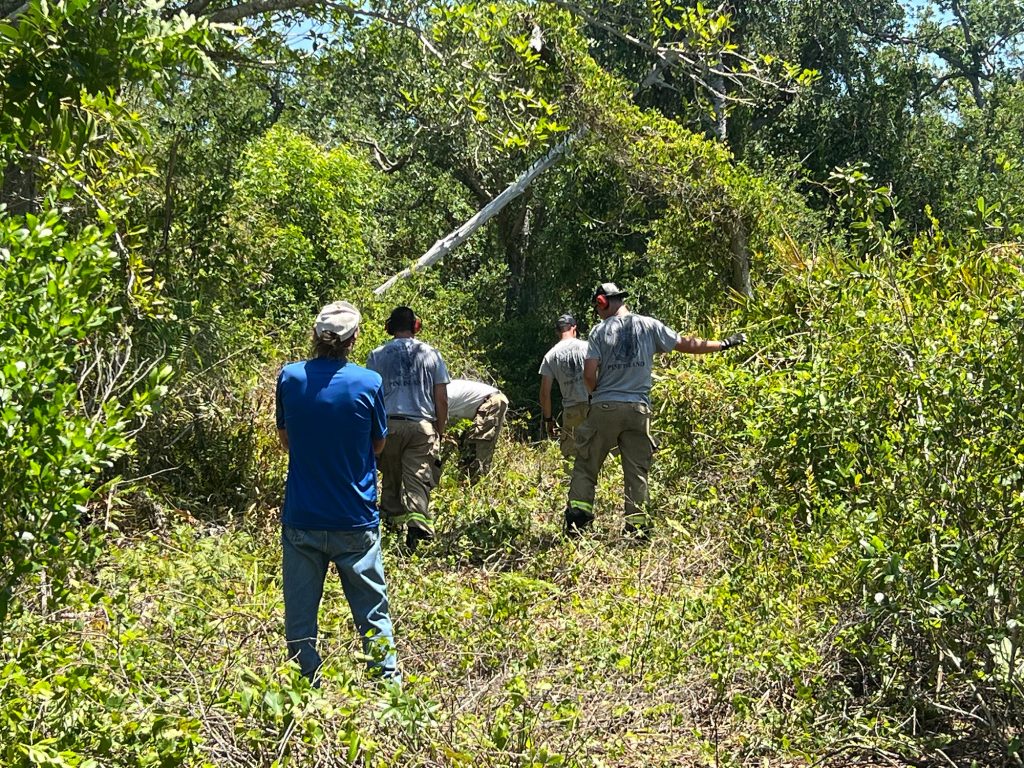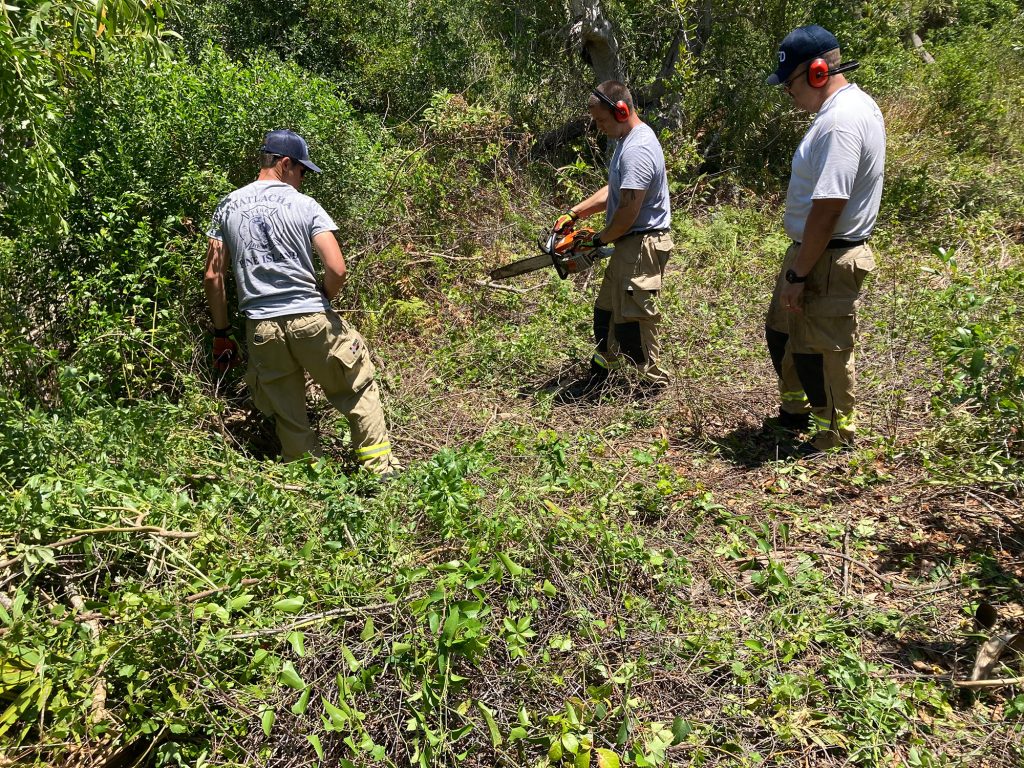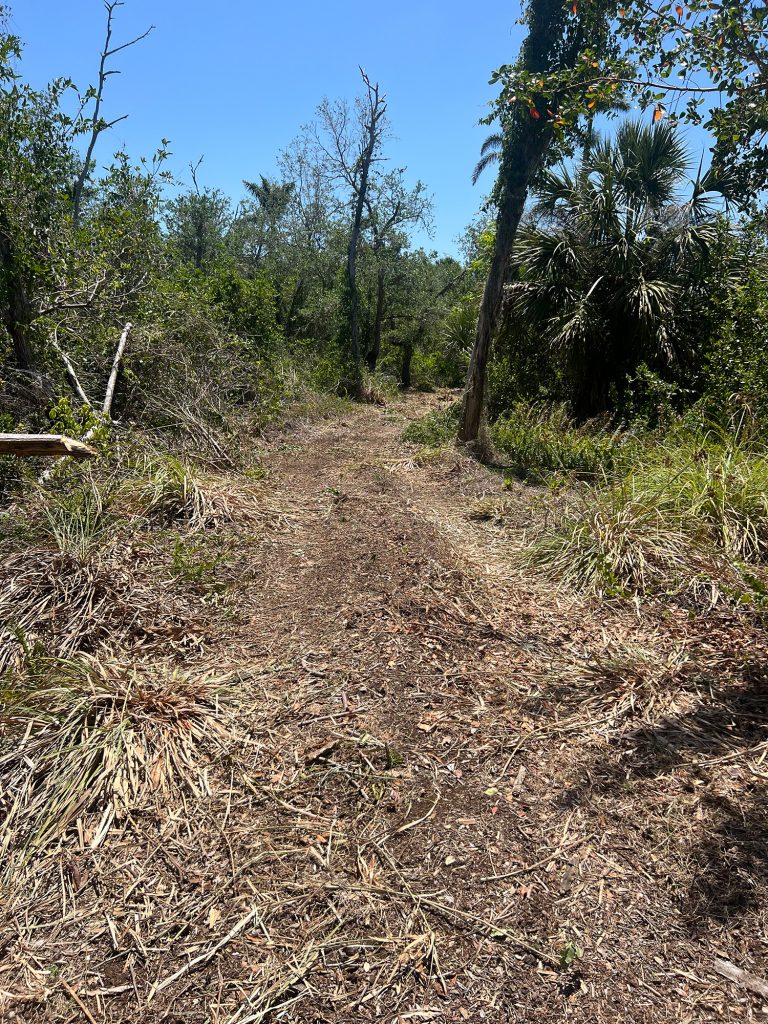In 2015, with generous support from the Calusa Land Trust and Sear Family Foundation, Smith Mound was added to the Randell Research Center and soon became a cherished part of the Calusa Heritage Trail.
Along the eastern boundary of the center, the Smith Mound portion of the trail is situated among a pineland forest and a portion of a sacred Calusa burial mound and remnant water feature.
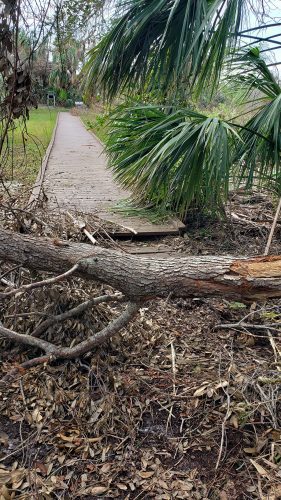
Following Hurricane Ian in 2022, access to Smith Mound was closed to visitors as well as RRC staff. A near category 5 hurricane, the winds and rain from Ian inflicted significant damage on the trees and trail surrounding Smith Mound — including numerous snapped or uprooted trees that could be dangerous to trail visitors. In addition to obviously damaged trees, we were also concerned about what is often referred to as “zombie” trees. Zombie trees are what may appear to be healthy or undamaged trees following a hurricane event, but in fact may be suffering from long-term injuries that lead to death (e.g., falling limbs, complete treefalls) between six months to two years following a storm.
Along portions of the Calusa Heritage Trail, including around Smith Mound, we did in fact observe ongoing treefalls and limbs well into 2024. Out of an abundance of caution and concern for the safety of our staff and the public, this portion of the Calusa Heritage Trail has remained closed for just over two years.
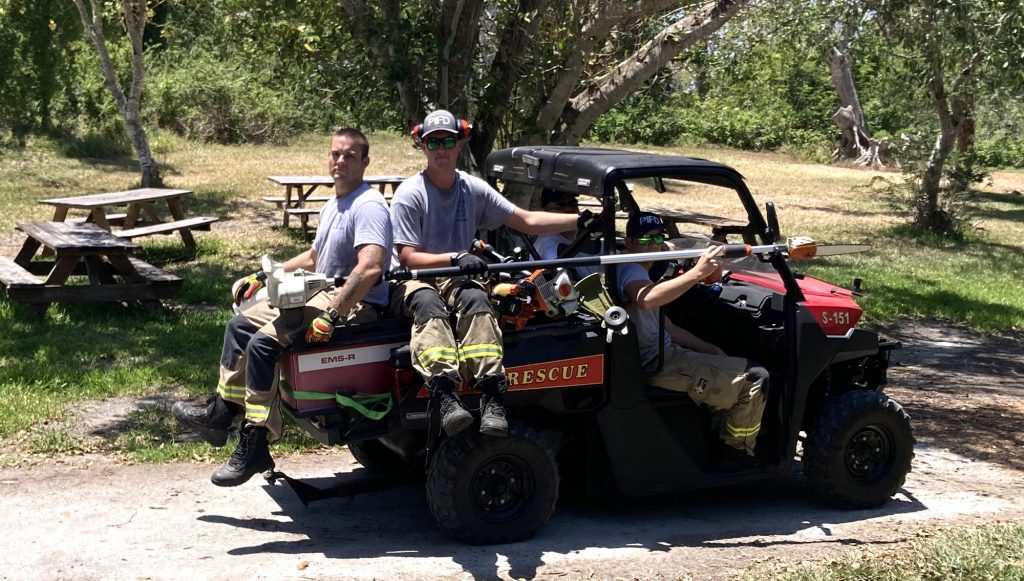
Today in 2025, three years following Ian and 10 years after community support made the acquisition and conservation of Smith Mound possible, we are happy to share that we are now actively working to restore the Smith Mound portion of the Calusa Heritage Trail! We are honored to be supported by the Matlacha/Pine Island Fire Control District in our endeavor to clear the trail of large tree and plant debris, making it possible for our dedicated RRC grounds staff to access and begin to restore the trail for the public.
On the morning of April 28, Fire Chief Benjamin Mickuleit, Assistant Chief of Fire Matthew Davis, and PIFD firefighters Johnathan Konopik, Jonas Hayes, and Zachary Kubik joined RRC Grounds Keeper Andy Jendrusiak at Smith Mound. Together, the crew worked hard to remove fallen trees, limbs, and an abundance of native and invasive plant overgrowth. It truly was a jungle!
“We are grateful for the opportunity to support the Randell Research Center with their trail restoration efforts. The Matlacha/Pine Island Fire Control District has always prided itself in giving back to the community, whether it be through our community events, public education, or a little sweat equity like this project. Hurricanes Ian, Milton, and Helene have heavily impacted our island community over the past few years. But even with all the devastation, the strength of Pine Island has come through to build back better and stronger.” says PIFD Assistant Fire Chief Matthew Davis.
We are extremely grateful to the Matlacha/Pine Island Fire Control District for their time, tools, and enthusiasm! Thanks to Adam Smith of the Fire and Emergency Sciences Program at the University of Florida M.E. Rinker, Sr. School of Construction Management for connecting us to fire department leadership.
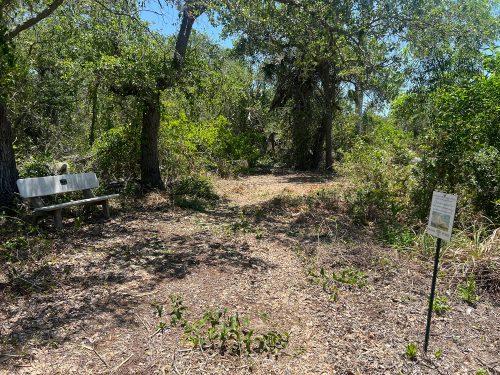
Over the summer months, the RRC staff will be working to safely complete the restoration of the trail around Smith Mound with the aim of welcoming visitors once again to the special, calm, and respectful environment that characterizes Smith Mound.
UF IFAS Lee County Extension Director and RRC Advisory Board Member, David Outerbridge explains that “The ecosystem impacts of recent hurricanes to many natural areas throughout Lee County, including Pineland, has been significant. The shifts in hydrology as well as wind and saltwater intrusion from these hurricanes have changed the landscape. What is positive, however, is seeing how the native landscapes and heritage ecosystems have absorbed these impacts and survived. The landscape restoration and management at the Randell Research Center is a testament to how the community of Pine Island and the efforts of staff, volunteers, and supporters at the center enable the Pineland landscape to evolve with the input and understanding of the language of the landscape.”
As always, community support and partnerships are at the heart of the RRC, the sustainability of the Calusa Heritage Trail, and the center’s enduring legacy as part of Pine Island and southwest Florida. Stay tuned for ongoing updates to Smith Mound and the announcement of its forthcoming re-opening toward the end of summer!
